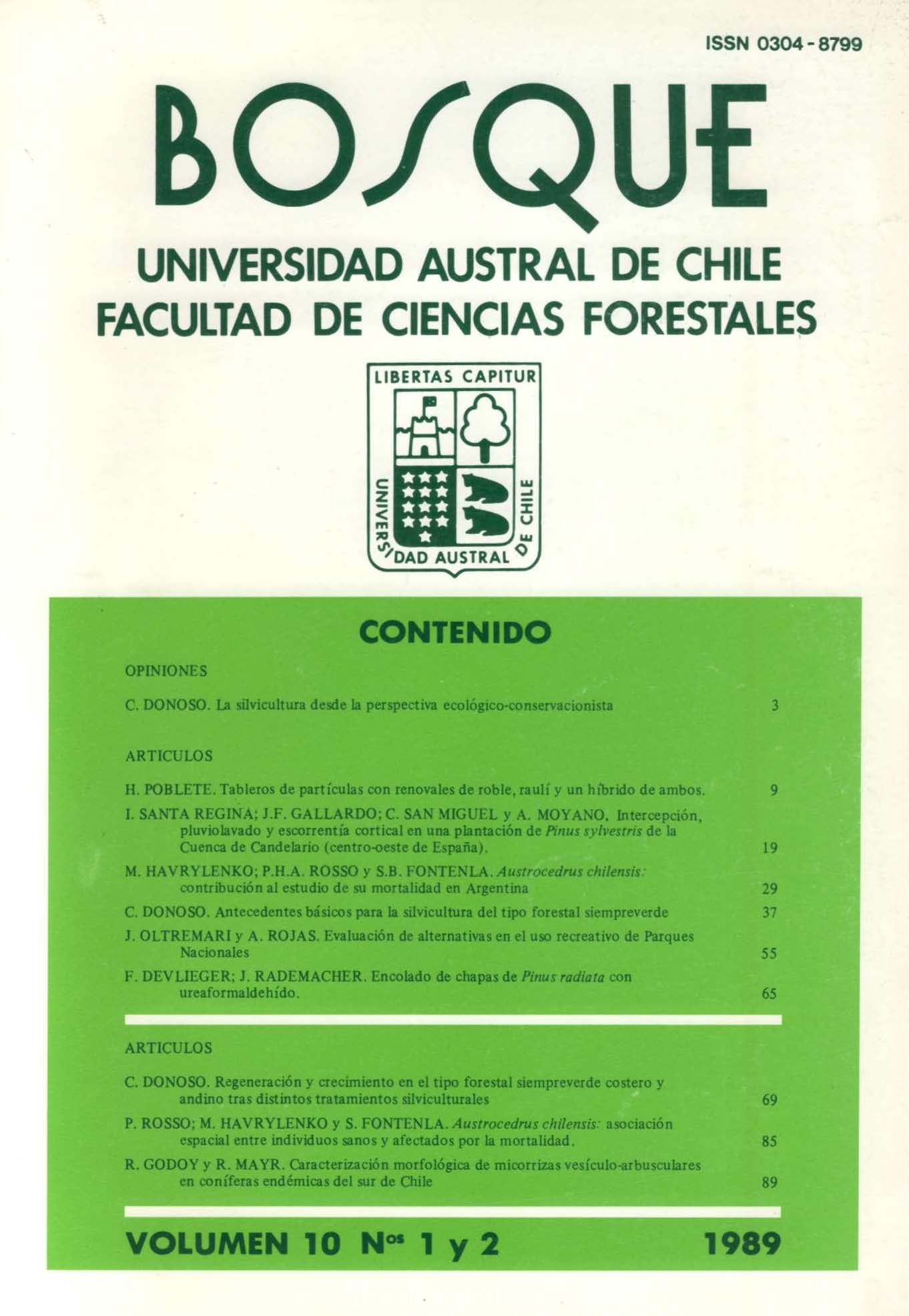Main Article Content
Dec 29, 1989
Abstract
The recreative development of National Parks is not generally based on a systematic analysis of the elements that affect them. Therefore this study presents a method that facilitates the objective decisions by selecting alternatives of recreational use. The design of the method is based on the analysis of the biophisical factors which affect the area. These factors are examined and evaluated through estimations or in situ measurements. The result is an aptitude indicator which, considering the site's characteristics, reveals the capability of the study area and suggest its best public use. The method was applied to three areas of the Tolhuaca National Park; obtaining high values for all the situations. However, small differences were found among the three development alternatives: picnic, camping, and cabins. This suggests that although the study areas have significant capabilities the decision of the type of facility that would be the best, is strongly influenced by factors which are external to the characteristics of the site.


